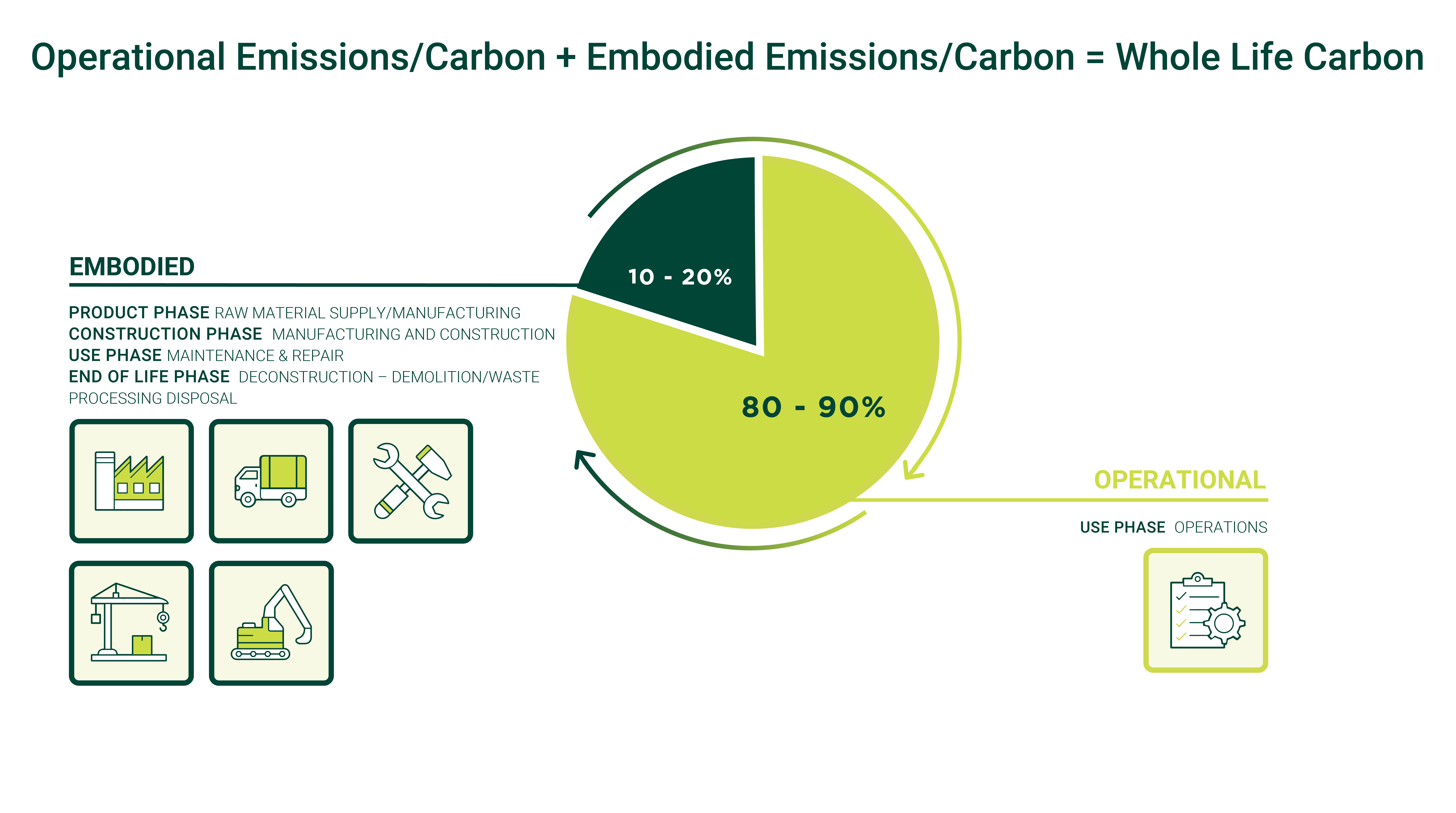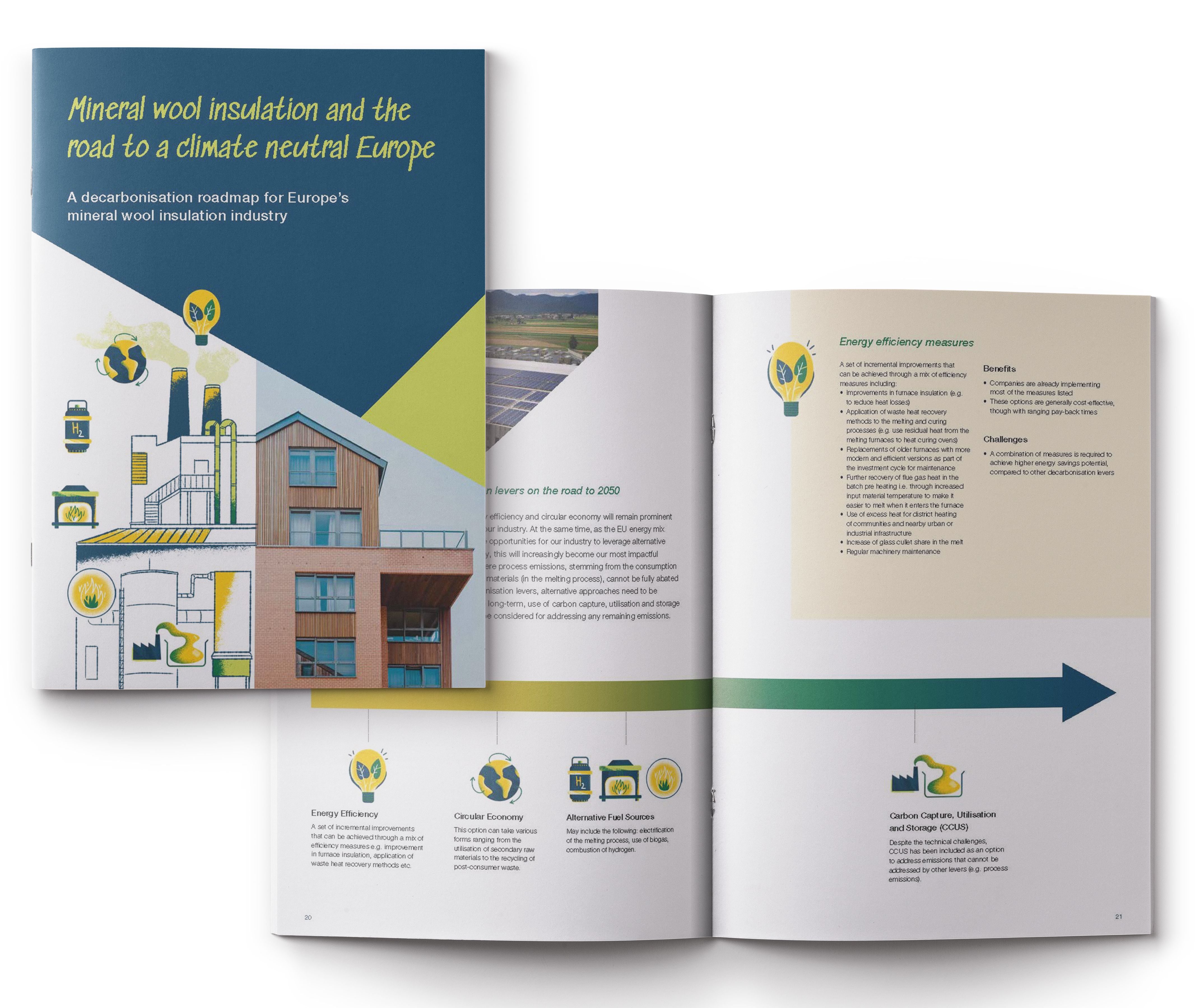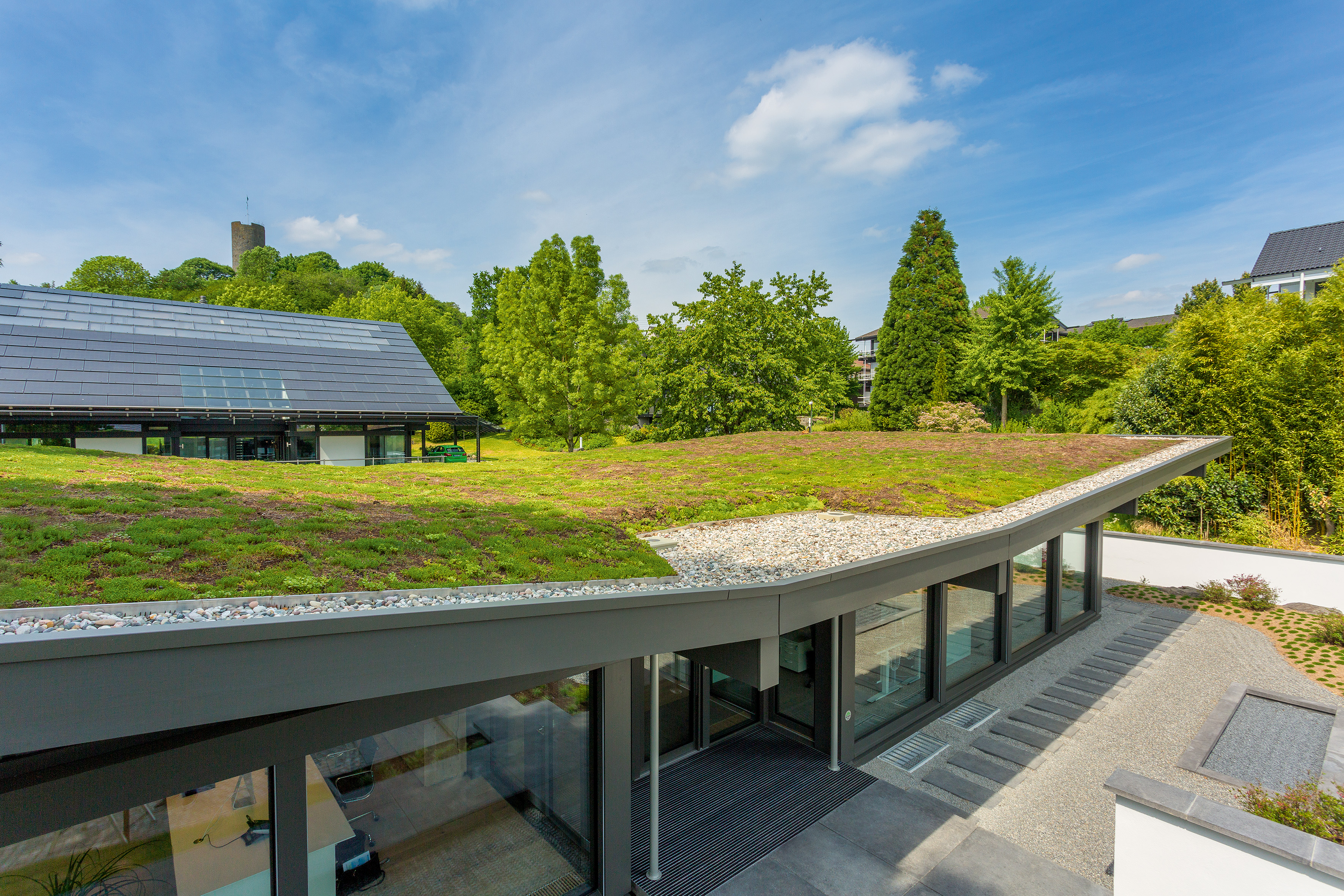The European mineral wool industry is committed to a climate-neutral economy by 2050, covering operational- and embodied carbon from a whole-life-cycle perspective.
Why is increasing energy efficiency in buildings through mineral wool insulation important?
Buildings have a climate impact through their ‘operational’ and ‘embodied’ carbon emissions, largely linked to their use of energy at all life-cycle stages. ‘Operational’ emissions include those generated from heating, cooling and lighting of buildings in-use, ‘embodied’ emissions include those generated throughout the value chain from manufacturing materials, transport, building construction, to the end-of-life.
For existing building stock, operational emissions account for the majority of emissions, around 85%. New buildings need to be nearly zero in operational energy and have a higher share of embodied emissions (typically 30-45%).

As producers of the most widely used building insulation material in the EU, the European mineral wool insulation industry is committed to helping society make the necessary energy and climate transition towards climate neutrality by 2050 by making buildings more energy-efficient thus enabling reduction in operational carbon emissions and reducing carbon footprints.
A 50% energy use reduction in European building stock would reduce CO2 emissions by 18% by 2030. Highly energy-efficient buildings can reduce energy demand and peak loads by 57GW and cut capital cost requirements in the power-sector between €53-89 billion by 2050. At the same time increased energy efficiency will facilitate the transition to and integration of renewable energy sources.
As part of both the construction- and energy-intensive industry eco-systems we are conscious of our continued responsibility in delivering high quality – high performance, durable, low-carbon footprint products while relentlessly investing in innovation and measures to reduce our production emissions and energy use while maximizing circularity.
To this end, we are proud to announce the launch of our Decarbonisation Roadmap. Unveiled on the 13th of March 2023, the roadmap outlines our industry’s journey towards the 2050 Climate Neutrality objectives, recounting the progress we have made until today, identifying the levers for continued progress while exploring the remaining industry and policy asks and priorities.
Read our document
As European demand for sustainable housing continues to rise, next to the reduction of operational energy and emissions through insulation, we have implemented a variety of measures to reduce the total lifecycle emissions produced by our sector’s production process. Energy efficiency improvements, innovative product design, development of circular processes as well as technology innovation at our plants to facilitate fuel switching have all contributed to a 40% reduction in the carbon intensity of mineral wool insulation manufacturing between 1990 and 2019.
Nevertheless, we believe further industry action is needed to transition towards a net-zero carbon sector. To achieve this goal, our Decarbonisation Roadmap assesses the levers at our disposal and outlines a broad range of potential solutions to further improve the energy efficiency of our operations, to increase the circularity of our products, and to transition to low-carbon fuel sources.
To fully decarbonize by 2050, our individual efforts will not be enough. As an enabling industry, we require a fit for purpose regulatory environment to facilitate this transition. To contribute to this discussion, we propose a number of policy measures (e.g. ensuring access to affordable and decarbonized energy, facilitating the access to recycled materials, and supporting research and innovation with targeted funding) that will be needed to fully decarbonise the mineral wool insulation sector and the EU building stock as a whole.




